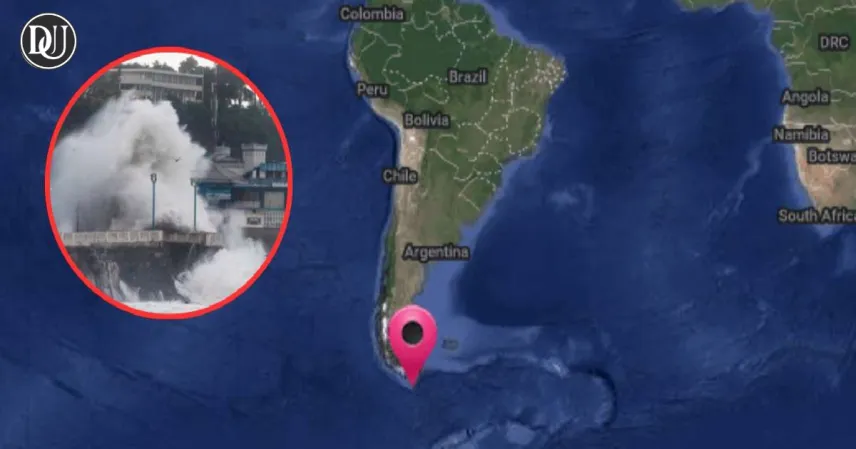Seismic Event Overview
On May 2, 2025, a powerful 7.4-magnitude earthquake struck the Drake Passage, a remote stretch of ocean between the southern tip of South America and Antarctica. The quake occurred at 9:58 a.m. local time, with its epicenter approximately 219 kilometers south of Ushuaia, Argentina, at a shallow depth of 10 kilometers. This event has been widely referred to as the "Argentina earthquake tsunami" due to its significant impact on the region.
Immediate Response and Evacuations
The seismic event prompted immediate tsunami alerts across Chile’s Magallanes region and parts of Argentina's Tierra del Fuego. Chilean authorities, including the National Service for Disaster Prevention and Response (SENAPRED) and the Navy’s Hydrographic and Oceanographic Service (SHOA), issued red alerts and ordered evacuations from coastal areas and Antarctic research stations. Approximately 1,800 residents were evacuated from Chilean towns such as Puerto Williams and Puerto Natales. Additionally, 32 personnel from Antarctic research bases were relocated as a precaution. In Argentina, the tremor was strongly felt in Ushuaia, leading to precautionary measures, although no official tsunami alert was issued. This series of events has been collectively termed the "Argentina earthquake tsunami" by local and international media.
Tsunami Alert and Aftermath
Chilean President Gabriel Boric, a native of the Magallanes region, activated national and regional emergency response committees and urged citizens to follow evacuation protocols. He emphasized that all state resources were available to address the emergency. Subsequent assessments revealed minimal sea level changes—6 centimeters at Chile's Prat Base and 23 centimeters at a Ukrainian base in Antarctica. These measurements led officials to classify the event as a "tsunami instrumental," indicating that while sea level changes were detected, they did not pose a significant threat. Consequently, the tsunami alert was lifted, though authorities advised the public to remain cautious and avoid coastal areas. The term "Argentina earthquake tsunami" continues to be used in discussions about the event's impact and response.
Geological Context and Historical Significance
No casualties or significant damage have been reported. The earthquake is noted as the most significant seismic event in the region since 1949. Chile's location along the Pacific Ring of Fire makes it prone to frequent seismic activity, and the country's emergency response systems are well-practiced in handling such events. The "Argentina earthquake tsunami" serves as a reminder of the region's vulnerability to seismic activity and the importance of preparedness.
Ongoing Monitoring and Public Advisory
Authorities continue to monitor the situation and have advised residents to stay informed through official channels. While the immediate threat has subsided, the "Argentina earthquake tsunami" underscores the need for continued vigilance and readiness in the face of natural disasters.










